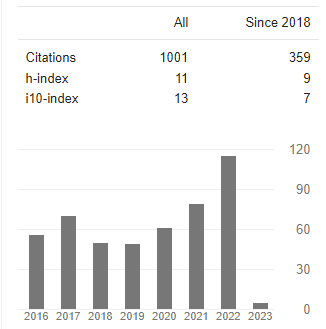A Comparative Study of Anxiety Between Inter - College level Male Folk Dancers and Kabaddi Players
Abstract
The intention of the study was to collate the Anxiety between male partakers of Kabaddi (NS and PS) and Folk dancers (bhangra and luddi ) of inter college level. In all competitive physical activities it is required that anxiety level should be moderate. The actual purpose of the study is to compare the difference of general anxiety when the nature of moments or physical activities (dance and sports) is different but the level of training is same. Most of the learning and training situations are same. Certain factors like rest, sleep, dietary habits, routine of practice is beyond the control of investigator so are considered as the limitations The subjects for this study were 50 whereas 25 each from Kabaddi and Dance team and age ranged from 19 to 25 years were purposive selected from Moga and Ferozepur district. Subjects were randomly selected from different colleges affiliated to Punjab University Chandigarh. For the Acquisition of Anxiety questionnaire developed by A.K.P Sinha and L.N.K. Sinha (2010) was used. The independent t- test was used to analyze data. Results indicated that there is a significant difference between both groups. Folk dancers have shown low anxiety level as compare to kabaddi players.
Downloads
References
Anderson, A.G., Miles, A., Mahoney, C., & Robinson, P. (2002). Evaluating the Effectiveness of Applied Sport Psychology Practice: Making the Case for a Case Study approach. The Sport Psychologist, 16, 432-453.
Burger, J. M., & Lynn, A.L. (2005). Superstitious Behavior among American and Japanese Professional Baseball Players. Basic and Applied Social Psychology, 27(1), 71-76.
Ciaran, D., Moira, O., Noel, C. & John C. (1980). Personality factor and Some Physiological Correlates in Athlete. Journal of Psychosomatic Research, 24(5), 281-285.
Ciolac, E.G.(2012). High-intensity interval training and hypertension: maximizing the benefits of exercise? A review. M J cardiovascular, 2(2), 102-110.
Csikszentmihalyi, M. (1975). Beyond boredom and Anxiety. San Francesco: Josses-Bass.
Dillon, K.M., & Tait, J.L. (2000). Spirituality and Being in the Zone Team Sports: A Relationship. Journal of Sport Behavior, 23(2), 91-100.
Frank, C.B. (1988). Personality Difference between Young Dancers and Non-Dancers.
Personality and individual differences, 9(1), 121-131.
Karter0li0tis and Gill (1987). Psychological and physiological changes in competitive state anxiety during non-competition and competitive success and failure. Journal of Sports and Exercise psychology, 1990,12, pp. 6-20.
Singh, I. (1987). An analytic study of origin and growth folk dances of Punjab.
Singer & Tutko. (1977). A comparative study of sports competition anxiety between district level male volleyball and soccer players.
Spielberger, C.D. et al. (1970). Manual for the State-Trait Anxiety inventory. (Polo Alto, calif: Consulting Psychologists Press)P3.
Spielberger, C. D. (1966). Theory and Research on Anxiety. In Anxiety and behavior (pp. 3- 20). New York: Academic Press.
Robert, S. W. & Daniel, G. (2007). Foundation of sport and Exercise psychology.
Walia, A. (2008). Folk Dances of Punjab, unister publications, Chandigarh

Copyright (c) 2025 Parwinder Kaur, Muhar

This work is licensed under a Creative Commons Attribution 4.0 International License.














